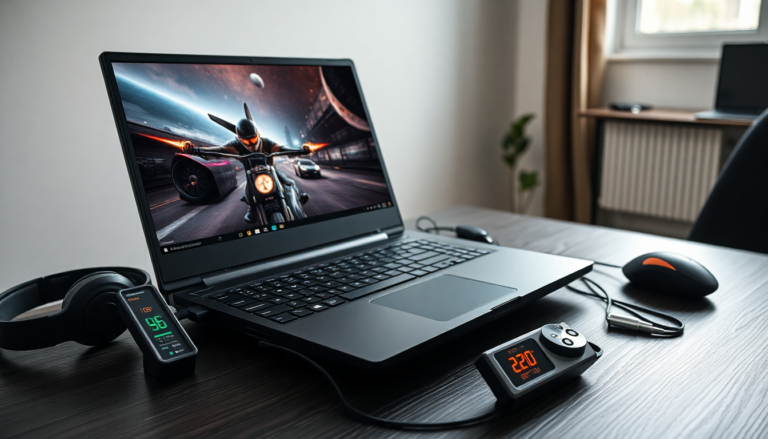Argomenti trattati
As gaming laptops continue to evolve with powerful hardware, the topic of thermal management, especially concerning the Platform Controller Hub (PCH), has become a hot topic among gamers. Have you ever wondered how high temperatures can affect your gaming experience? Elevated temperatures can lead to performance dips and even hardware failures, making it crucial for users to understand the acceptable temperature thresholds for their devices. This article dives into the implications of high PCH temperatures in gaming laptops, offering insights into effective cooling strategies and essential hardware specifications.
Understanding PCH Temperatures
The PCH is a vital component in a gaming laptop, managing the data transfer between the CPU, memory, and various peripherals. To give you some context, the Intel HM770 chipset has a maximum junction temperature (TJMAX) set at 108°C, with a critical shutdown point at 110°C. This means that while reaching 108°C is technically within limits, it’s alarmingly close to the point where your system might automatically shut down to prevent damage. Who wouldn’t be concerned about that?
Gamers using devices like the MSI Vector GP78HX 13V have reported PCH temperatures hitting that 108°C mark during intense gaming sessions, especially in graphics-heavy titles like Forza Horizon 5. Some might argue that manufacturers design systems to withstand such temperatures, but let’s be honest: consistent exposure to high heat can lead to long-term reliability issues. It’s like driving a sports car at full speed all the time; just because it can handle it doesn’t mean it’s a good idea.
Cooling Solutions and Recommendations
Given the critical need to manage PCH temperatures effectively, investing in cooling solutions is essential. Many gamers have turned to external cooling pads, which help circulate air and lower overall temperatures. But have you considered internal modifications? Attaching a copper heatsink directly to the PCH might provide even better thermal management.
However, it’s equally important to ensure that your gaming laptop has a proper ventilation system. If airflow is obstructed or inadequate, even the best cooling pads may struggle to make a difference. It’s worth taking a moment to check for any coverage issues, like shielding patches that could block airflow, before splurging on additional cooling accessories.
Regularly monitoring your laptop’s temperature is also advisable. There are software tools that can provide real-time thermal readings, helping you keep an eye on critical heat levels. If you find yourself facing frequent blue screens or unexpected shutdowns, these could be signs that high PCH temperatures are affecting your laptop’s performance.
The Future of Gaming Laptop Design
Despite the advancements in gaming laptop technology, manufacturers often seem to prioritize cost over optimal thermal management solutions. This raises an important question: are companies sacrificing effective PCH cooling in their quest for higher profit margins? While lower manufacturing costs can lead to increased profits, one must consider the potential costs to the consumer.
As the popularity of gaming laptops continues to rise, it’s essential for manufacturers to tackle these thermal challenges head-on. Future designs need to incorporate more efficient cooling solutions and take into account the long-term effects of high temperatures on hardware longevity. Gamers deserve devices that not only deliver outstanding performance but also ensure reliable operation.
In conclusion, while high PCH temperatures remain a concern for gaming laptops, understanding the specifications and employing effective cooling strategies can help mitigate these risks. By actively monitoring temperatures and exploring both external and internal cooling solutions, users can significantly enhance their gaming experience while protecting their valuable hardware.

